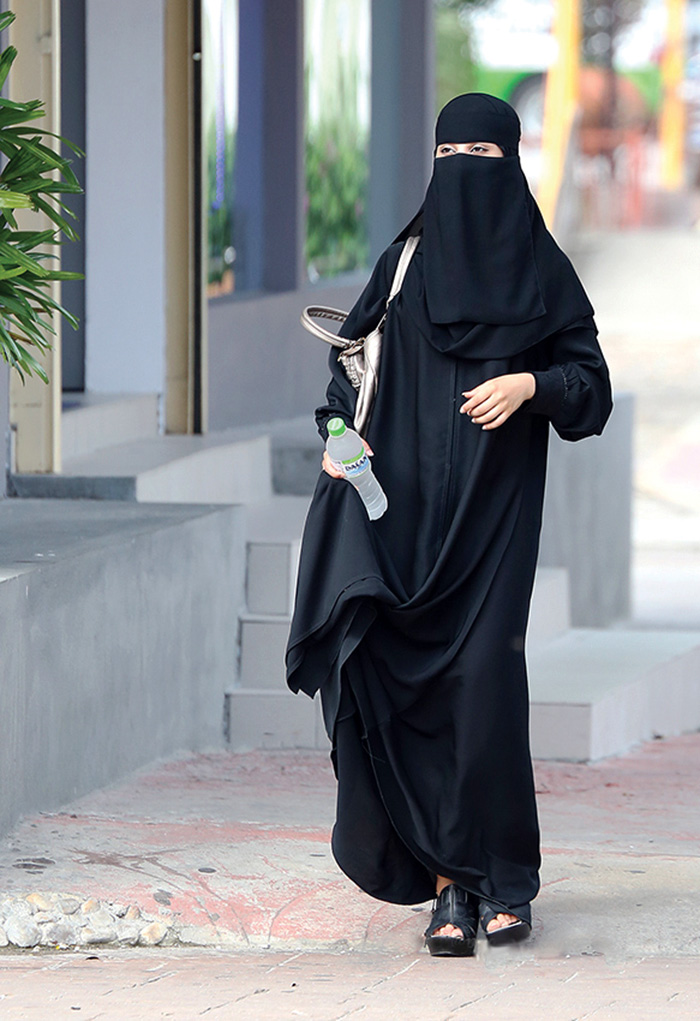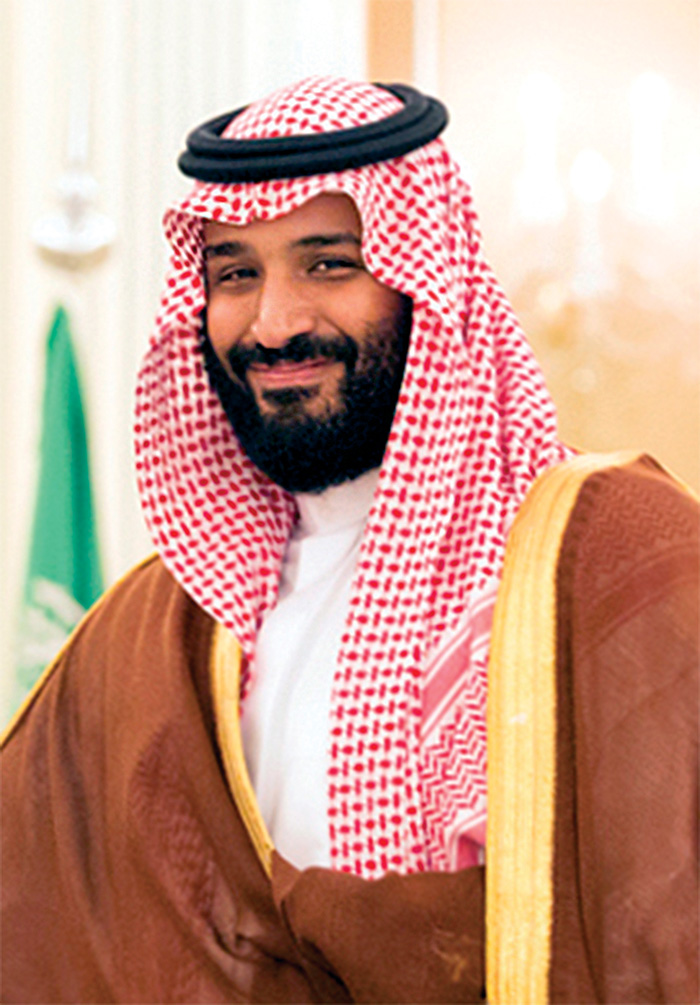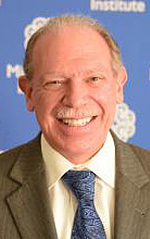Saudi Arabia: Liberalization, Not Democratization
The plan for sweeping changes to meet economic and demographic challenges does not appear to include an opening-up of the political system.
BY JERRY FEIERSTEIN

A Saudi Arabian woman in full niqab.
Wikimedia Commons/CC by 2.0/THX_9151bs
Saudi Arabia’s leadership is coming under growing pressure to address significant economic and demographic challenges so it can remain a stable, prosperous country. These include:
• Nearly 45 percent of the population (currently about 26 million) is under the age of 25.
• Although the official unemployment rate is less than 6 percent (private estimates are significantly higher), nearly one-third of young Saudis are unemployed.
• As demand for jobs grows, the traditional employers—the public sector and the energy sector—are increasingly incapable of providing opportunities.
• Young, urbanized Saudis are demanding reforms that will relax the country’s highly restrictive social climate, especially in regard to gender issues.
In response, Mohamed bin Salman, the country’s young crown prince—familiarly known as MBS—has already instituted a number of popular social reforms, and is now undertaking sweeping economic changes to address the country’s challenges. But as of now, a real democratic opening in the political system does not appear to be in the cards.
The United States has a strong interest in seeing the crown prince’s reform efforts succeed. Regional security and stability, as well as the health of the global economy, depend on a stable Saudi Arabia fully integrated into the international community. Saudi reforms would also open doors for greater U.S. business participation in one of the most prosperous economies in the world.
At the same time, efforts to address the demands of a young, urbanized and well-educated population must also include meaningful political reform. It is therefore in the interest of the United States to encourage the Saudi leadership to include measures to build a more open, democratic government in their plans.
It’s the Economy, Stupid

Saudi Arabia’s Crown Prince Mohamed bin Salman.
The White House
MBS’ project revolves around “Vision 2030,” a comprehensive economic and social initiative with three core elements:
• Developing a diversified and sustainable economy that shifts away from reliance on the energy sector as the main pillar;
• Shifting the main driver of economic growth and prosperity from the public sector to the private; and
• Creating the millions of jobs needed to absorb the coming demographic wave as the public sector retreats from its historic role as employer of first resort.
Perhaps no element of the Saudi economic reform package has received more international attention than the proposal to privatize a small portion of the country’s crown jewel, Saudi Aramco, which Saudi authorities value at $2 trillion. The exact percentage of the company that would be sold to the public has not yet been announced. In addition, the timing of the sale is still unknown; there is some speculation that the release of stock for sale on international markets may be delayed at least until 2019 in hopes that rising prices in the energy sector will strengthen the company’s valuation. But whatever the details of the initial public offering turn out to be, it’s important to remember that this is only one element of a much broader reform package.
Another important element of the Saudi economic strategy involves major investments to turn the private sector into the main engine for job creation, increasing its contribution to gross domestic product from the current 40 percent to 65 percent by 2030. The effort has two prongs: expanding the private sector of the economy, and privatizing elements that had until now been public-sector enterprises. Specifically, Riyadh sees significant potential in areas as diverse as retail, mining, tourism and (surprisingly, for a country uniquely associated with the oil and gas industry) renewable energy. Another consideration driving the Saudi interest in solar and nuclear energy is the recognition that the country’s growing domestic energy demands are eating into its capacity to export its most marketable asset.
In addition to diversifying the economy, the Saudis have announced their intention to transition certain labor categories, particularly in education and health care, from governmental control to the private arena.
Beyond developing new sectors for economic growth, Vision 2030 also proposes measures to make the Saudi private sector more competitive and more attractive for investors. Specifically, it sets the ambitious goal of placing Saudi Arabia in the top 10 nations on the Global Competitiveness Index and increasing the share of foreign direct investment in the economy from 3.8 percent to 5.7 percent of GDP. Building on the country’s geographic advantages, the plan aspires to make Saudi Arabia a regional hub for trade and finance. Toward that end, Riyadh commits in the plan to reform visa processes, remove licensing obstacles for enterprises of all sizes and improve financial services.
Transforming Saudi Society
Vision 2030 is an aspirational document. It’s unlikely that all the ambitious goals it lays out can or will be achieved over the next decade. The plan is frank about the need to open up Saudi society on many levels if economic reforms have any hope of succeeding.
First and foremost among the Saudi traditions that pose obstacles to economic reform and modernization are those related to gender and women’s roles in society. MBS created a domestic and international stir last fall when he announced that the government would drop its ban on women driving beginning in June 2018. The royal decree immediately removed one of the most contentious issues in Saudi society. Although actual implementation has not yet begun, the press is reporting that many young women are eagerly discussing which model of car they plan to buy when the new laws are implemented.
That decision was followed by other steps to relax restrictions on women’s freedoms. The government has already announced that women will no longer be prohibited from attending public sporting events, and a senior Saudi cleric recently suggested that women would no longer be required to wear the abaya and niqab (full veil) when out in public. Other elements of the traditional, “male guardianship” system remain intact, although the government has pledged to permit women to travel abroad without a male family member accompanying them.
Indications are that Saudi Arabia will remain an authoritarian state, with little scope offered for popular participation.
In many ways, these recent initiatives to enhance women’s roles in society are a lagging indicator; Saudi women have been making steady inroads into historically male-only preserves for years. By 2014, well over half of Saudis graduating with bachelor’s degrees were females, though the percentage of women seeking post-graduate degrees remained among the lowest of any Organization for Economic Cooperation and Development member-state.
Vision 2030 seeks to increase the proportion of Saudi women in the workforce—already rising, particularly in the retail sector—to 30 percent by 2030. To help make that happen, Riyadh is dropping the requirement for gender segregation in the workplace.
Beyond gender issues, the crown prince’s ambitious plans to move the Saudi economy toward a private-sector focus will require sweeping changes to the country’s traditional cradle-to-grave social welfare system. Interestingly, young Saudi women appear far more interested in finding careers in the private sector than their male counterparts, who often prefer the security and better pay and benefits of public-sector jobs.
In an effort to change that dynamic, the government has pledged to equalize pay and benefits packages across the private and public sectors, and encourage entrepreneurship and enterprise opportunities. Unusual for an OECD country, unemployment is higher for young, educated Saudis than it is for their less-educated peers. Recognizing that, the plan emphasizes the need to strengthen higher education. Thus the government has proposed to re-examine the curricula of institutions of higher education to ensure that they are producing graduates with the skills the private sector demands.
In a further attempt to steer more young Saudis toward careers in the private sector, the government recently announced that by the end of the year some businesses in the retail sector would no longer be permitted to hire non-Saudis. While past attempts at promoting “Saudization” of the economy have fallen well short of expectations—foreign nationals still constitute the vast majority of employees in the Saudi private sector—the growing demand for jobs for Saudis and the public sector’s inability to satisfy that demand both lend a new urgency to the effort.
MBS is also shaking up his country’s power structure, which has long featured a dynamic tension between the ruling Al Saud family and the arch-conservative religious establishment that promotes the austere Wahhabi doctrine originally espoused by the 18th-century Islamic cleric Mohamed ibn Abd al-Wahhab. By asserting that the Saudi government would seek to place Saudi Arabia’s religious practices closer to the mainstream of Sunni Islam, thereby returning the country to its pre-1979 practices, Mohamed bin Salman has taken steps to curtail the power and authority of the religious establishment.
So, for example, his decisions concerning the roles and participation of women in Saudi society have upended decades of religious doctrine aimed at confining them largely to roles as homemakers. In addition, the government recently restricted the hitherto unchecked authority of the dreaded mutawa’een (religious police) to enforce Wahhabi strictures.
These decisions are broadly popular with younger, urbanized Saudis (although likely less popular among more conservative religious elements and citizens in the religious heartland). Similarly, steps to introduce aspects of “normal” urban life to the country, including reintroducing movie theaters and permitting music concerts, albeit still gender-segregated, have improved the quality of life for young Saudis and reduced intergenerational frictions.

U.S. Defense Secretary James Mattis meets with Saudia Arabia’s King Salman bin Adulaziz, at right, in Riyadh on April 19, 2017.
Wikimedia Commons
Dim Prospects for Political Change
In his first year as crown prince, Mohamed bin Salman, with the approval of his father, King Salman bin Abdul Aziz, has implemented the most sweeping changes in generations. But there is no indication that he intends to match his dramatic moves on the social and economic fronts with equally substantial reforms of the country’s governing structures. In fact, indications are that Saudi Arabia under King Salman and the crown prince will remain an authoritarian state, with little scope offered for popular participation, let alone peaceful political dissent.
Authorities continue to arrest and imprison Saudi citizens merely for criticizing the government or participating in peaceful protests. Nearly all members of the Saudi Civil and Political Rights Association have been imprisoned for their pro-rights advocacy, according to Human Rights Watch. Several bloggers and social media activists, including women advocating for improved women’s rights and the prominent blogger Raif Badawi, have been sentenced to extended prison terms for their activism. In a stunning display of authoritarian power, late last year the government detained dozens of the country’s wealthiest and most prominent businessmen and senior government officials for weeks in the five-star Ritz-Carlton Hotel in Riyadh, on allegations of corruption. The detainees were held until they agreed to return to the government billions of dollars—some reports suggest the final figure was in excess of $100 billion—in alleged corrupt payoffs.
There is little doubt that corruption in Saudi Arabia is a significant impediment to economic reform. Steps by the government to root it out would undoubtedly improve the business climate and attract greater foreign and domestic investment. Moreover, by all accounts, the government’s move against those accused of corruption was generally popular with Saudi citizens.
In a March 18 interview with Norah O’Donnell of “60 Minutes,” Mohamed bin Salman insisted that the Ritz-Carlton detentions were “extremely necessary.” But as one close observer of the Saudi scene has noted, the anti-corruption drive was the right thing to do, but done in the wrong way. The crown prince insisted that all of the procedures “were in accordance with existing and published laws,” but they do not appear so to many observers.
Instead of building systems to stem corruption through a strong legal framework and judicial review, thus building confidence in the rule of law, the state chose to shake down the accused in an opaque process without ever being called on to prove the charges in court. By arguing that the action was justified by a sense of urgency preventing the use of more formal legal channels, the government lost an opportunity to build the kind of framework that will benefit Saudi society over the long term.
For generations, the theory of governance in Saudi Arabia was that the population would accept the absolute rule of the Al Saud family in return for prosperity and stability. The question, now, therefore, is how reduction, or even the elimination, of core elements in the social safety net will affect the population’s expectations. Accommodating the demand of young Saudis for loosened societal controls will undoubtedly reduce pressure on the ruling family to allow for a greater popular voice in fundamental government decisions. But will that trade-off be enough?
The U.S. Interest in MBS’ Success
Saudi Arabia has been a pillar of U.S. foreign policy and national security in the Middle East since the end of World War II, as well as a key partner in promoting global economic prosperity. In his comments welcoming the crown prince to the White House in March, President Donald J. Trump highlighted the broad scope of U.S.-Saudi cooperation in promoting regional security and stability. As the Trump administration sharpens its approach to Iran in the coming months, seeking to challenge its regional ambitions, ballistic missile programs and interference in its neighbors’ affairs, Saudi Arabia will be a critical partner. Moreover, the administration will look to Riyadh to assist in the reconstruction of Iraq and Yemen, the stabilization of Syria and efforts to resolve the Israeli-Palestinian conflict.
For all these reasons the United States, which is counting heavily on Saudi support, has every reason to welcome the Vision 2030 initiative and to contribute to its success. In particular, the U.S. business community has been deeply engaged in the initiative, and will benefit from its close ties to Saudi counterparts.
But we also have an equally strong interest in shoring up Saudi Arabia’s long-term political stability. Toward that end, Washington should do all it can to ensure that Saudi society has safe channels for airing dissent. It should also make the case to the Saudi leadership that its willingness to accept divergent views is an important component of our engagement. For as the experience of the Arab Spring suggests, when authoritarian regimes actively suppress dissent, the result is often an unhealthy build-up of pressures that leads to an unmanageable explosion of anger and frustration.
As MBS and the Saudi leadership advance broad, sweeping changes in the fundamental fabric of their society, it becomes more important than ever that the population have access to acceptable, peaceful means to express its views on those proposals. Part of the U.S. contribution to the success of the Vision 2030 project should therefore be continued engagement with the Saudi leadership, encouraging it to embrace greater popular participation in decision-making, more open political debate and a strong adherence to the rule of law. Such reforms can be as important to the overall success of the transformative project as the social and economic adjustments Vision 2030 is slated to bring to Saudi Arabia.






